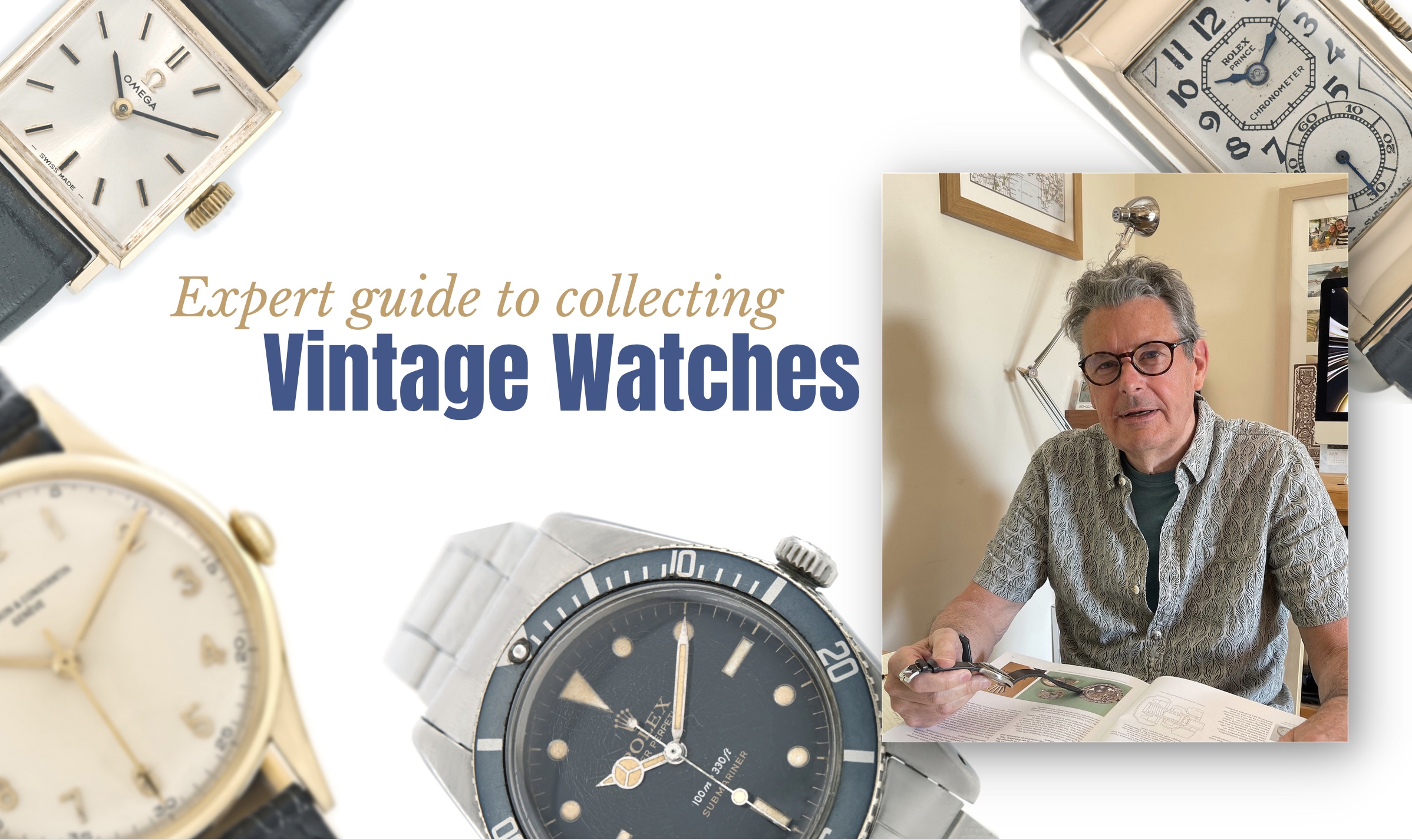#Vintage #Watches #Expert #Tips #Collecting #Antique #Collecting
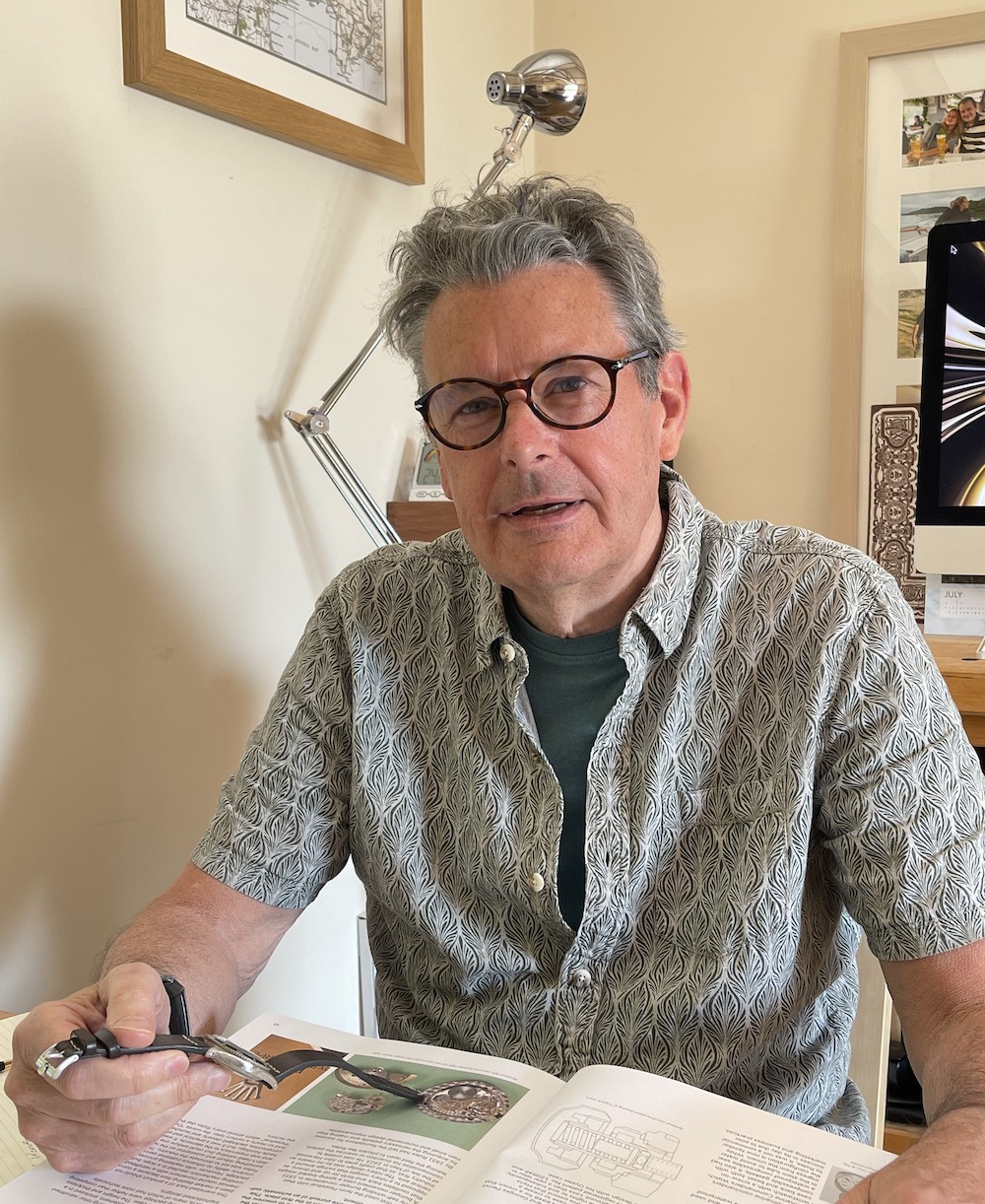 Alan Wood, founder of Vintage Gold Watches www.vintagegoldwatches.com is a trusted vintage watch dealer with over 35 years of private collecting experience. His deep knowledge and infectious passion for mechanical timepieces have earned him a highly respected reputation in the industry. Vintage Gold Watches, established in 2011, has become a reputable dealer thanks to Alan’s expertise and a skilled team of restorers. His love for vintage watches started as a young mechanical engineer and grew into an obsession. He believes the finest watches were made in the 1950s, 60s, and 70s, and he is thrilled to share them with others.
Alan Wood, founder of Vintage Gold Watches www.vintagegoldwatches.com is a trusted vintage watch dealer with over 35 years of private collecting experience. His deep knowledge and infectious passion for mechanical timepieces have earned him a highly respected reputation in the industry. Vintage Gold Watches, established in 2011, has become a reputable dealer thanks to Alan’s expertise and a skilled team of restorers. His love for vintage watches started as a young mechanical engineer and grew into an obsession. He believes the finest watches were made in the 1950s, 60s, and 70s, and he is thrilled to share them with others.
In recent years, investing in vintage watches has seen a remarkable surge in popularity. Everyone is talking about starting their own vintage watch collection or looking to buy a not-so-new timepiece to adorn their wrist.
Why buy a vintage watch as opposed to a new one?
It seems a growing number of people are tuning in to the value, workmanship, and quality of such timepieces. Not to mention a vintage watch’s ability to reflect one’s lifestyle, values and individuality. And most people are surprised when they find out that most vintage versions of popular luxury watch brands are cheaper than the original.
Online shopping has made it easier than ever to buy absolutely everything you could possibly desire and gather all the information needed to be an expert on anything. This is definitely one reason for the surge in the popularity of vintage watches. Additionally, all things vintage have seen a resurgence as people become more aware of unsustainable mass consumption and realise the inherent high-quality of items made from yesteryear.
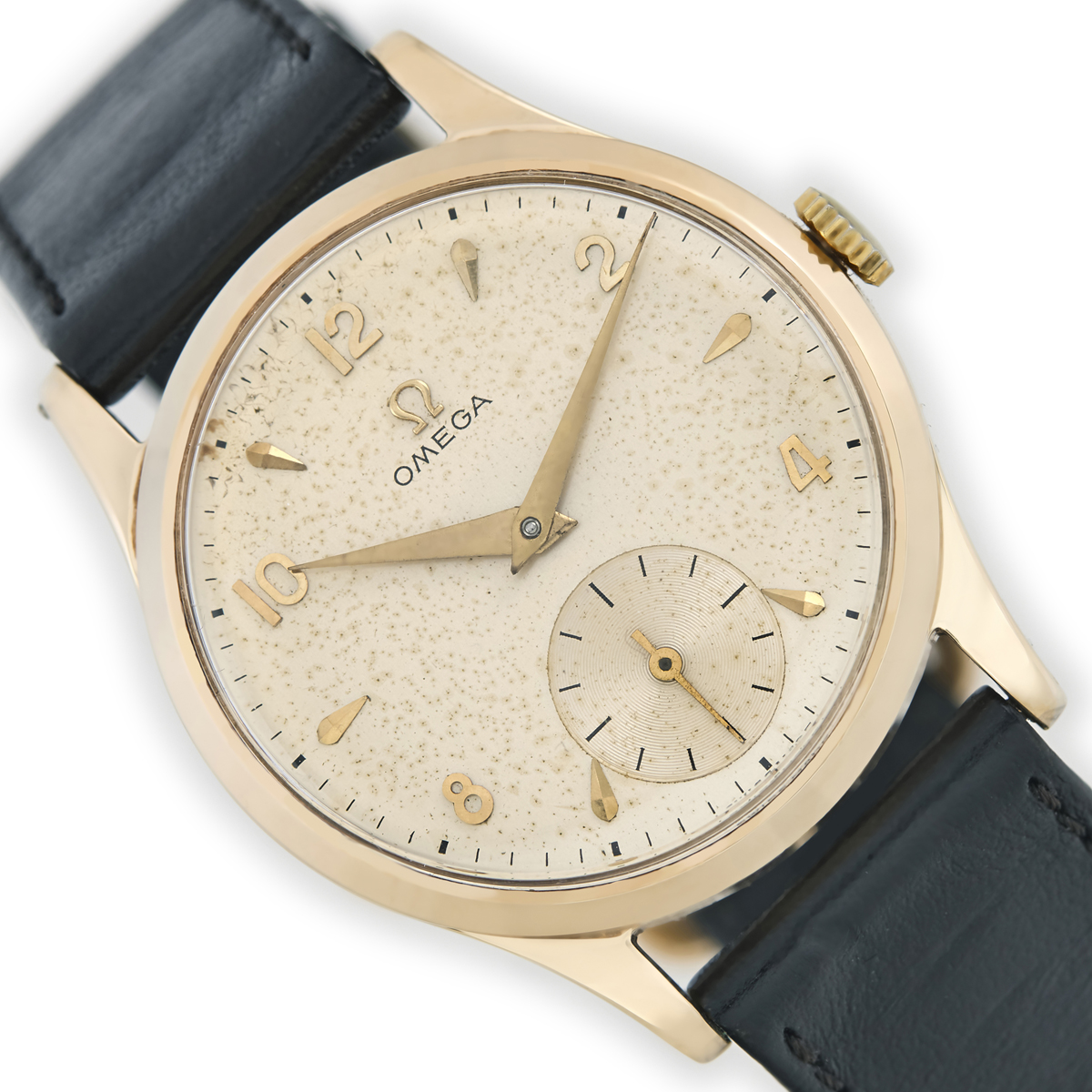
There’s so much life left in many of the high-quality things we’ve bought in the past. Often these are well-made and very well-loved, not to mention the individuality and the timeless story a vintage item brings. Hence the growth in popularity of vintage products across many industries.
Things to consider when buying vintage watches
One of the appeals of vintage watches is the level of knowledge that can be gained and the immense number of intriguing niches and rabbit holes one can go down. One thing is for certain, if you want to invest in a vintage watch you need to understand your buying intentions and get to know the market. Here are some pertinent tips to get you started:
Does it suit your lifestyle? How will you use it?
Whether you are a watch connoisseur or a new collector, it is important to consider your lifestyle when purchasing a wristwatch for everyday use. If you plan on wearing it and enjoying it everyday that is (which we highly recommend). Some people keep their vintage watches safe in a box, but with such great beauty that brings so much joy, why wouldn’t you want to enjoy it?
Take time to consider the watch in your daily routine. If it’s an everyday watch then waterproofing will be important to you (most vintage watches are not waterproof, and even those that once were many decades ago are probably not now). If you would like a dress watch for special occasions, you can probably get away with no waterproofing.
Gold, of course, is somewhat softer than steel, although due to other metals in the alloy, it is still quite robust. Bear in mind that the lower the carat, the harder and less easily marked the gold is. So, for example, 14ct gold is slightly harder than 18ct, and 9ct is harder than both 14ct and 18ct gold. Hard gold means fewer dents and scratches.
Research, research, research
You can’t really circumvent this step, and why would you want to? It’s part of the journey of falling in love with vintage watches. If you don’t have much time to research, find inspiration on Pinterest and Instagram. Search for watches and ‘pin’ or ‘heart’ the ones that you like for future reference. It’s a great way to identify your tastes and preferences. Don’t forget the online forums – they are an absolute goldmine of information where you can learn from other collectors’ experiences and knowledge.
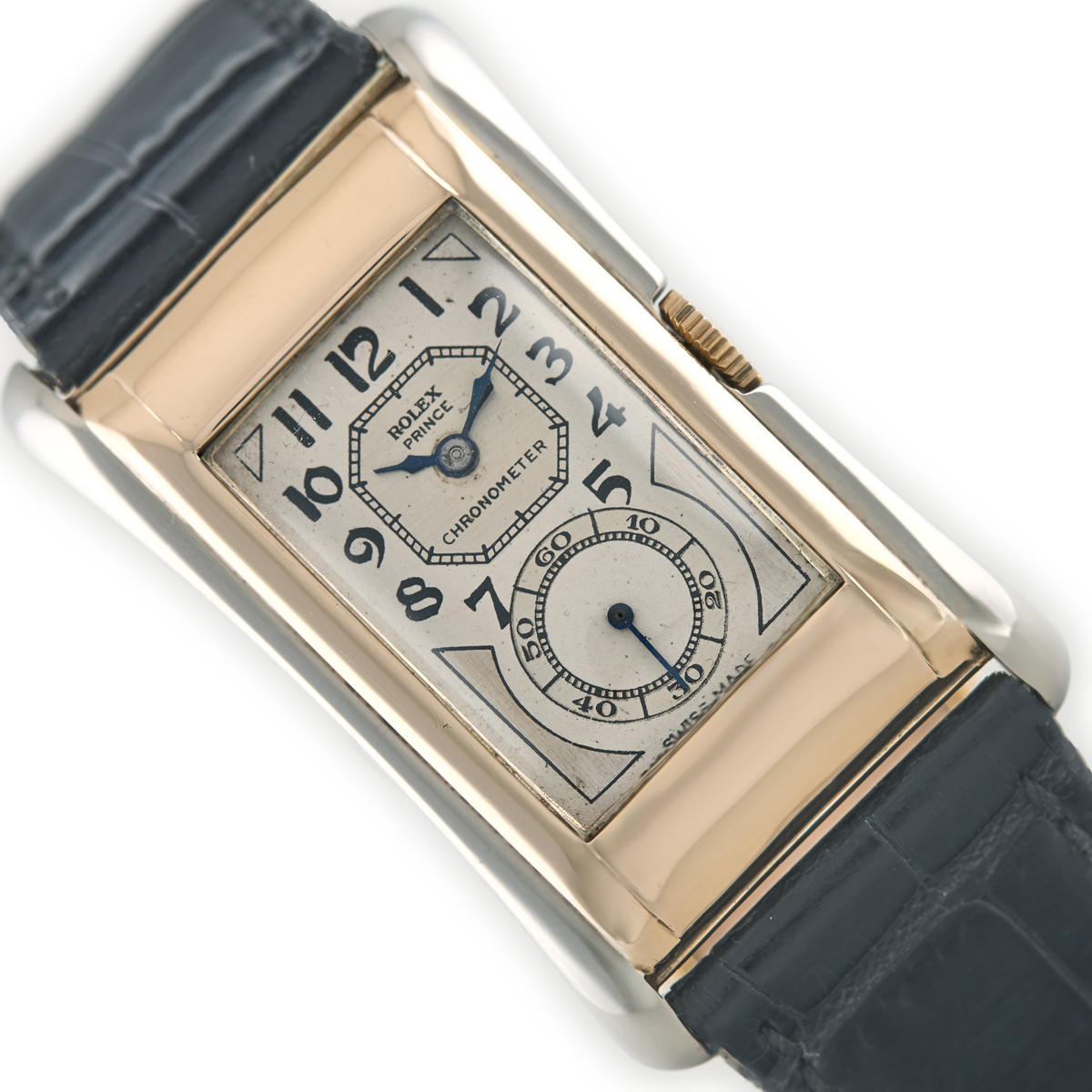
Get to know the vintage watches market
Once you know the styles you like, you can start to drill down into brands and references that fit within your objectives. Vintage Gold Watches stocks over 100 titles of specialist vintage watch books, with some rare and out-of-print titles. They are not only fantastic references packed with information but these large-format hardback books make a great coffee table addition.
Decide what you don’t want
It is easier to start by realising what you don’t like rather than what you do. This can save a lot of research time and alleviate a huge amount of decision fatigue and frustration. You may lust after the image of a timepiece, but when you get it on your wrist you may slowly fall out of love with it. As with everything in the vintage watch world – it’s a journey.
Find a reputable dealer you trust
Get friendly with a few reputable vintage watch dealers before you are anywhere near purchasing. Find out what they specialise in, what is their experience and ask questions such as “What’s included in your after-sales service?” and “How long are the warranties?” A good vintage watch dealer should have a solid after-sales service and will include a 12-month warranty with all sales. As they say in the industry “Buy the seller before you buy the watch” – you must be sure that the dealer has your best interest at heart and is reputable and trustworthy. If you have a good vintage watch dealer you don’t have to worry that you’ll end up with a dud.
Start with a classic piece from the 50s, 60s or 70s
This was the golden age of watchmaking. The huge majority of watches from this era will hold their value and are a low-risk investment. If funds are limited, choose a watch with a strap over one with a bracelet. Bracelets add hugely to the cost, especially in gold. A gold bracelet can add 30% to the cost of a watch.
Buy with your eyes and heart
This may sound obvious, but it’s much better to buy what you like rather than what someone else does. It’s far too easy to be swayed by someone else’s opinion online about a watch or its general popularity. Not that this should be ignored, but the most important thing is that you really like your watch. In fact, you should love it. Likewise, don’t overly worry about investment potential, since over the longer term a watch from one of the major brands will definitely increase in value, provided it is reasonably well looked after.
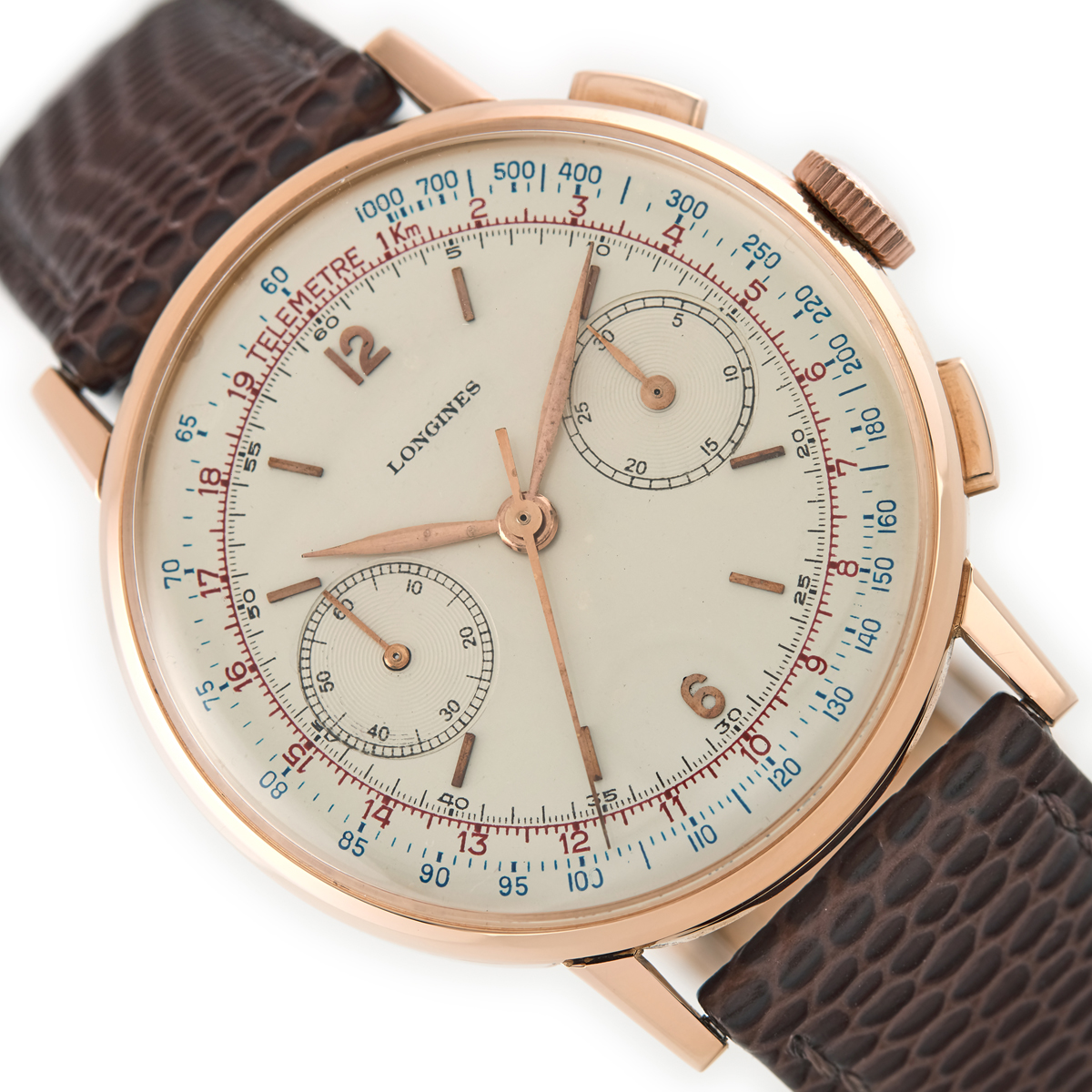
Ignore quartz watches
except for a few exceptions, such as the Rolex Oysterquartz, as they tend to have less lasting value and are slightly controversial in the vintage watch industry. Vintage watch lovers are beguiled by mechanical watches and the engineering feats they have accomplished. Quartz watches, which are basically the first computer watches, are electronic and have few mechanical parts and therefore hold very little appeal for most vintage watch collectors.
Condition and originality are key
Often, a watch with its original dial and a lack of polishing that is in top condition is considered to be more valuable than a restored timepiece. That’s because restoring a dial with only a little superficial damage from fading or speckling, for example, can be a bad idea. Likewise, polishing removes metal from the timepiece, which many collectors don’t like because this spoils the lines of a watch.
A vintage Rolex that has an original unrestored dial that hasn’t been overly polished can command a premium. Originality, even with a few scratches, is what makes a watch unique, interesting, and compelling. Having said this, it’s horses for courses; a fully restored watch with some light case polishing done by a good professional case polisher is often preferred.
Some flaws are not only acceptable but can make the watch more desirable and valuable. A good example is Rolexes with “tropical” dials which have become faded or brownish over time due to sun exposure and a few minor manufacturing errors. These are rare and highly coveted by collectors. Originality vs condition is a nuanced area within the vintage watch market. What a buyer is looking for compared to an investor, or even a collector, is usually quite different.
Icons never go out of style
This is one hard and fast rule that will always be true in the vintage watch market. We’re talking about the superstar references that have been adored through the ages like the Rolex Submariner or the Patek Philippe Calatrava.
Protect your investment
Let’s be clear, a vintage watch is designed to be worn, used and enjoyed, so our best advice is to wear your vintage watch, or watches, as much as possible. If you must store them for a prolonged period of time, find a safe, dark and dry location and wind them fully once a month. This will help to keep the parts well lubricated and allow the watch to function reliably for years.
If you do not have original boxes for your watches, we recommend you use some soft leather watch rolls with a velvet lining, such as those stocked on the Vintage Gold Watches website. Have your watch serviced by a quality watchmaker (not a jeweller in the high street) every three to five years. A service should include cleaning, lubricating, regulating and gasket inspection.
Budget considerations
While prices of vintage watches vary wildly, just like that in the car or housing market, one pleasantly surprising fact about vintage watches is that the vintage version is almost always cheaper than the original. The vast amounts of money spent at auction on incredibly rare pieces are the exception, not the rule. For example, a new Rolex Oyster Perpetual Datejust retails at around £7,000 – £12,000 but you could buy a vintage version of the same watch in good condition for around £4,000.
The beauty of vintage watches is that they are almost guaranteed to hold their value. In the case of the Rolex mentioned above, it’s pretty much guaranteed not only to hold its value but to increase. This is why we recommend buying a reputable brand vintage watch from the 50s, 60s or 70s. If you choose a well-known high-end brand and a model with enduring popularity it will ensure you are safe from any depreciation risk.
As prices vary so much let’s take a look at what you can get for your money in different price ranges:
£0 – £4,999
This price range contains the majority of the vintage watches on the market so there really is something for everyone. Remember the tips given above and you can’t go wrong.
£1,500 Ladies Omega Cal.484, 9ct, 1969
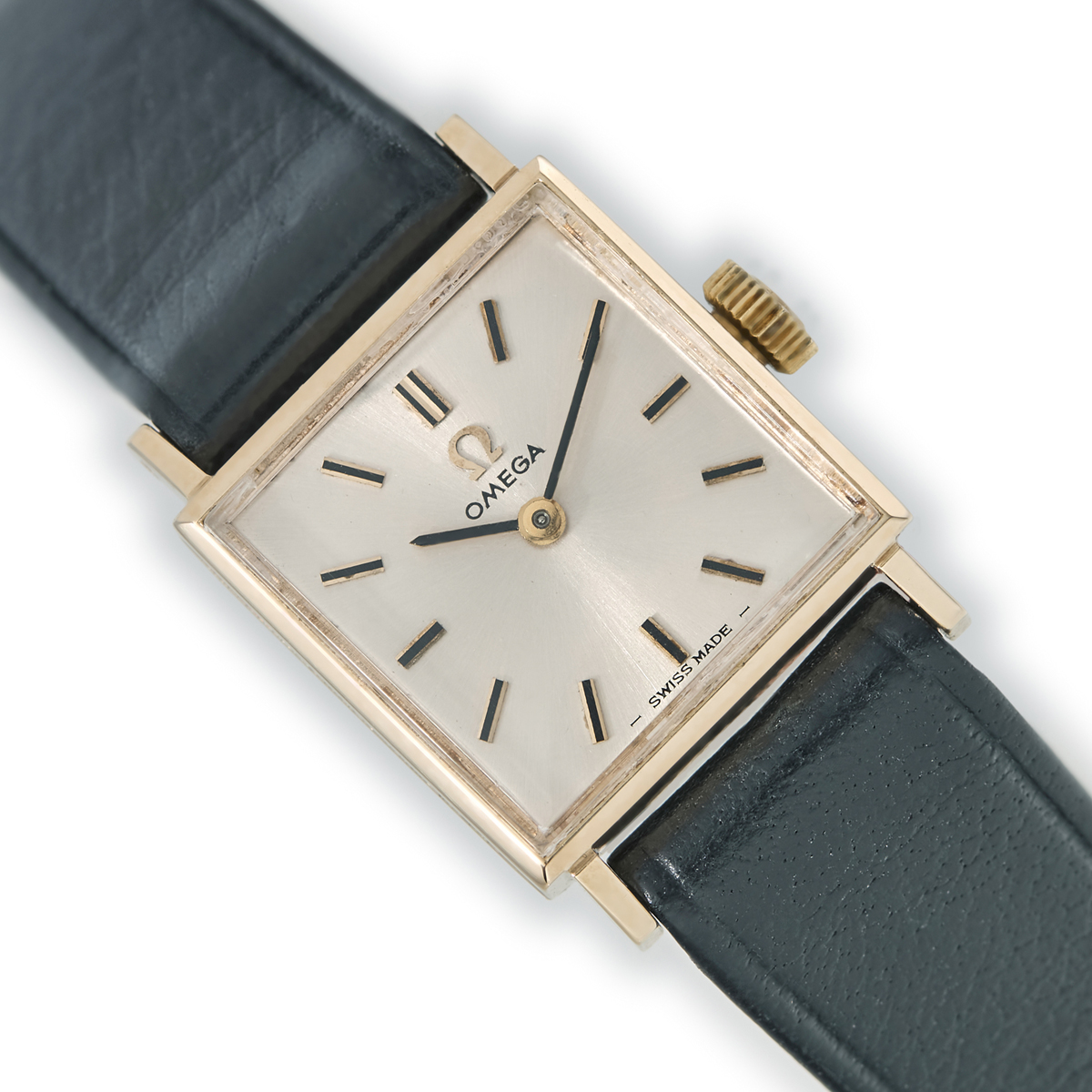
£1,950 Omega Cal.265 9ct, 1952

£2,450 Universal Geneve Cal.263 18ct, 1946
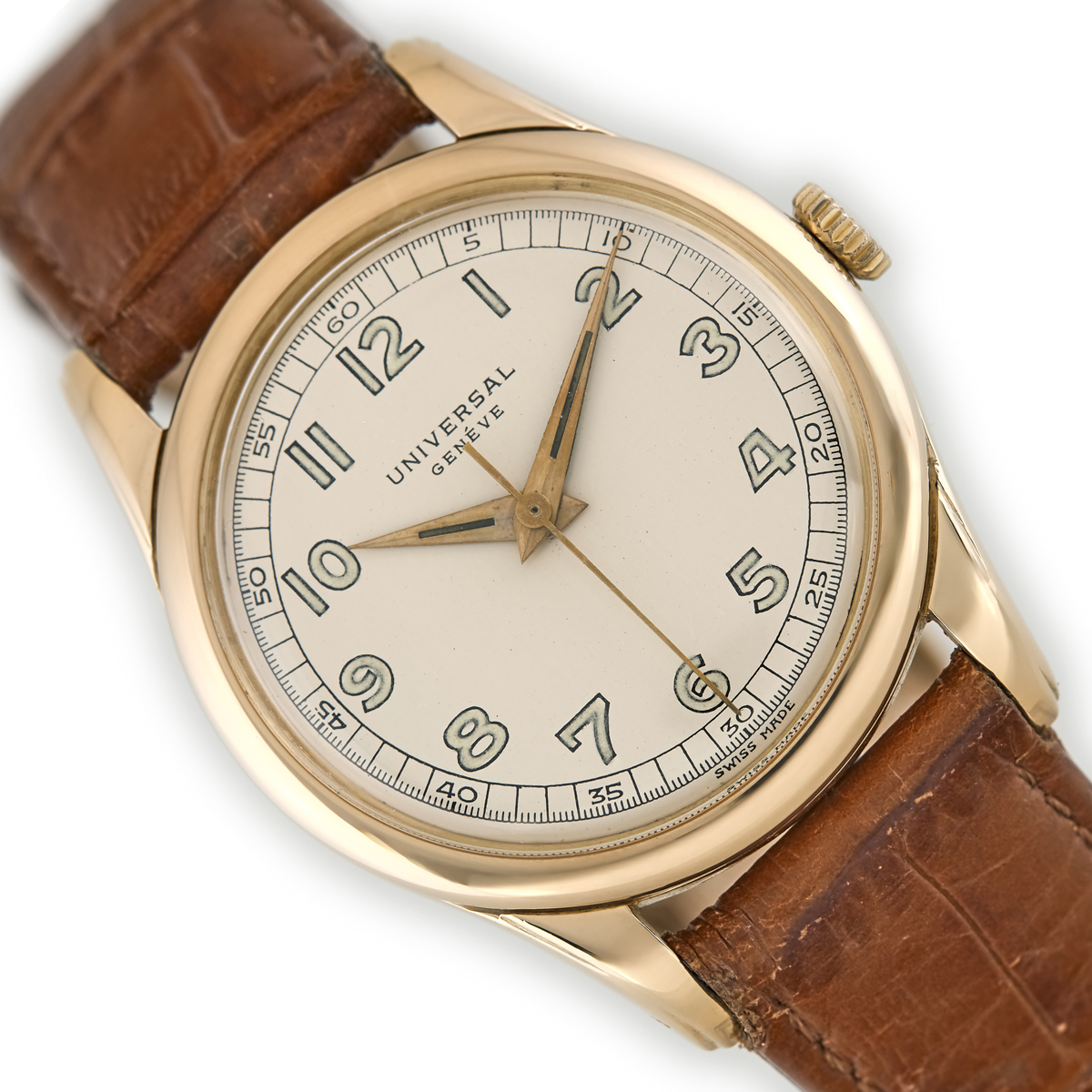
£4,650 Rolex Oyster Perpetual Date Ref.1505, 1978, Steel and Yellow Gold
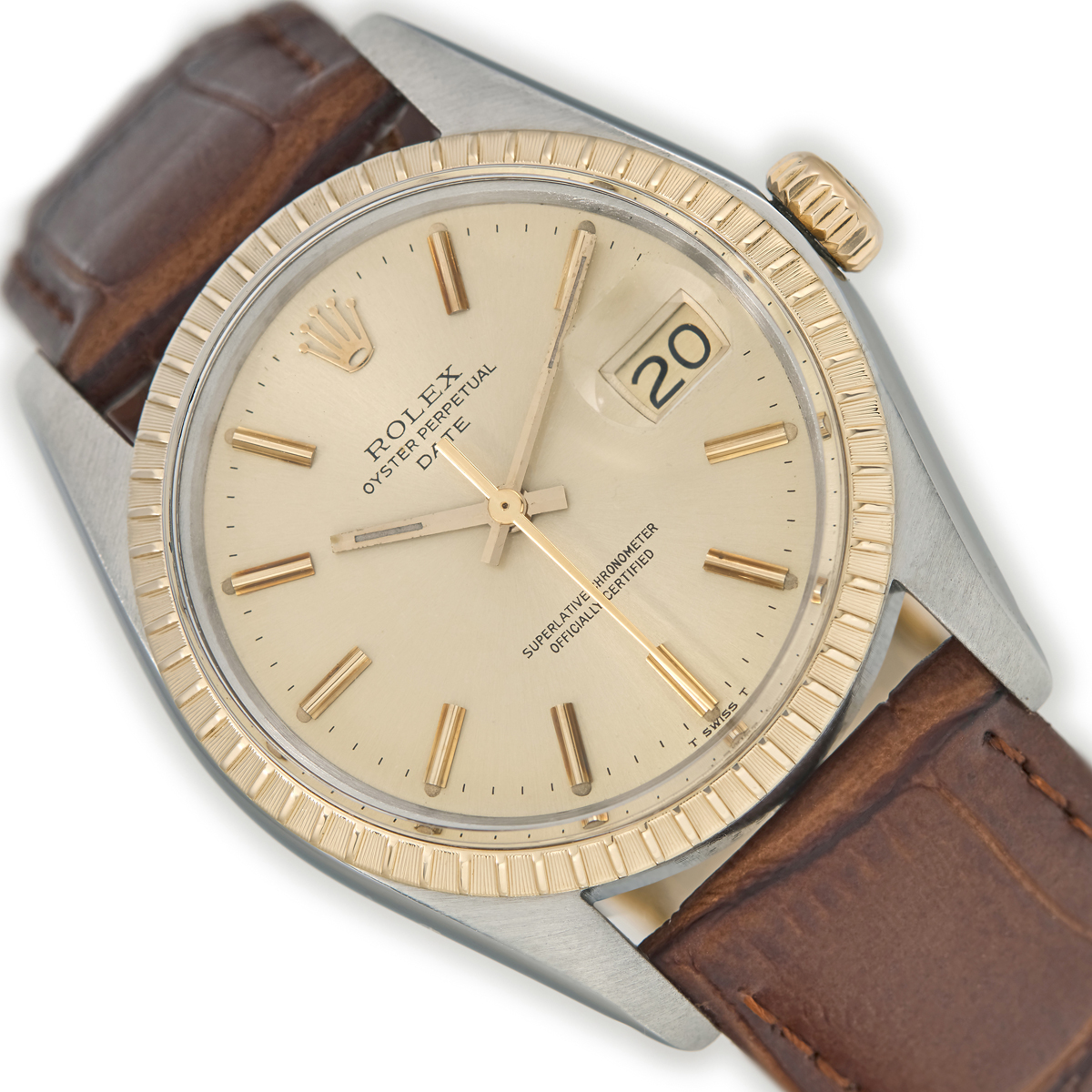
For more examples see our recommended Top Five Affordable Watches for Under £2,000.
£5,000 to £9,999
In this price range you can find less common pieces that collectors love to buy.
£5,750 Vacheron & Constantin Cal.454/4C, 18ct, 1940
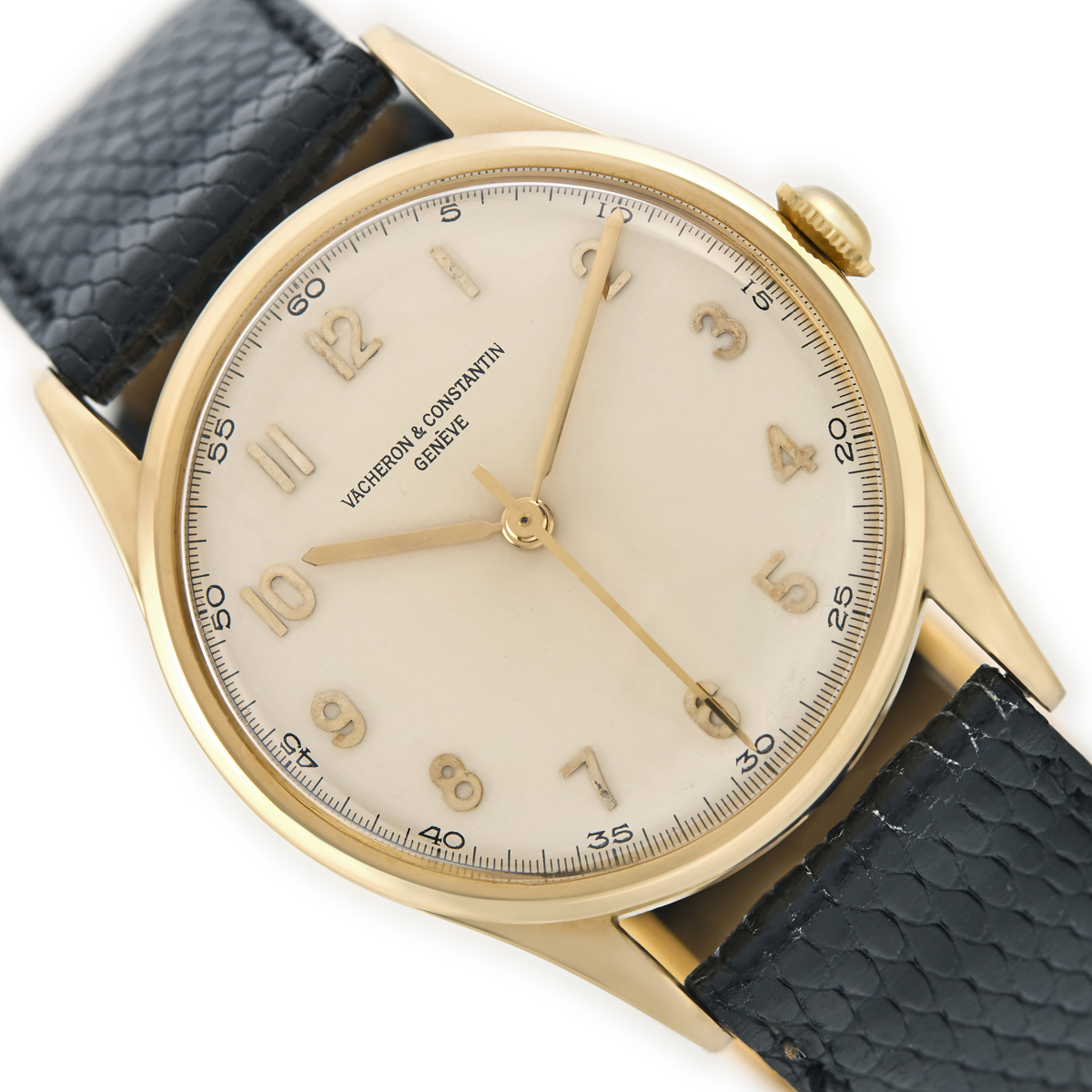
£6,750 Longines Cal.30CH Flyback Chronograph, 18ct Pink Gold, 1953

£7,950 Patek Philippe Calatrava Ref.3498 18ct White Gold, 1965
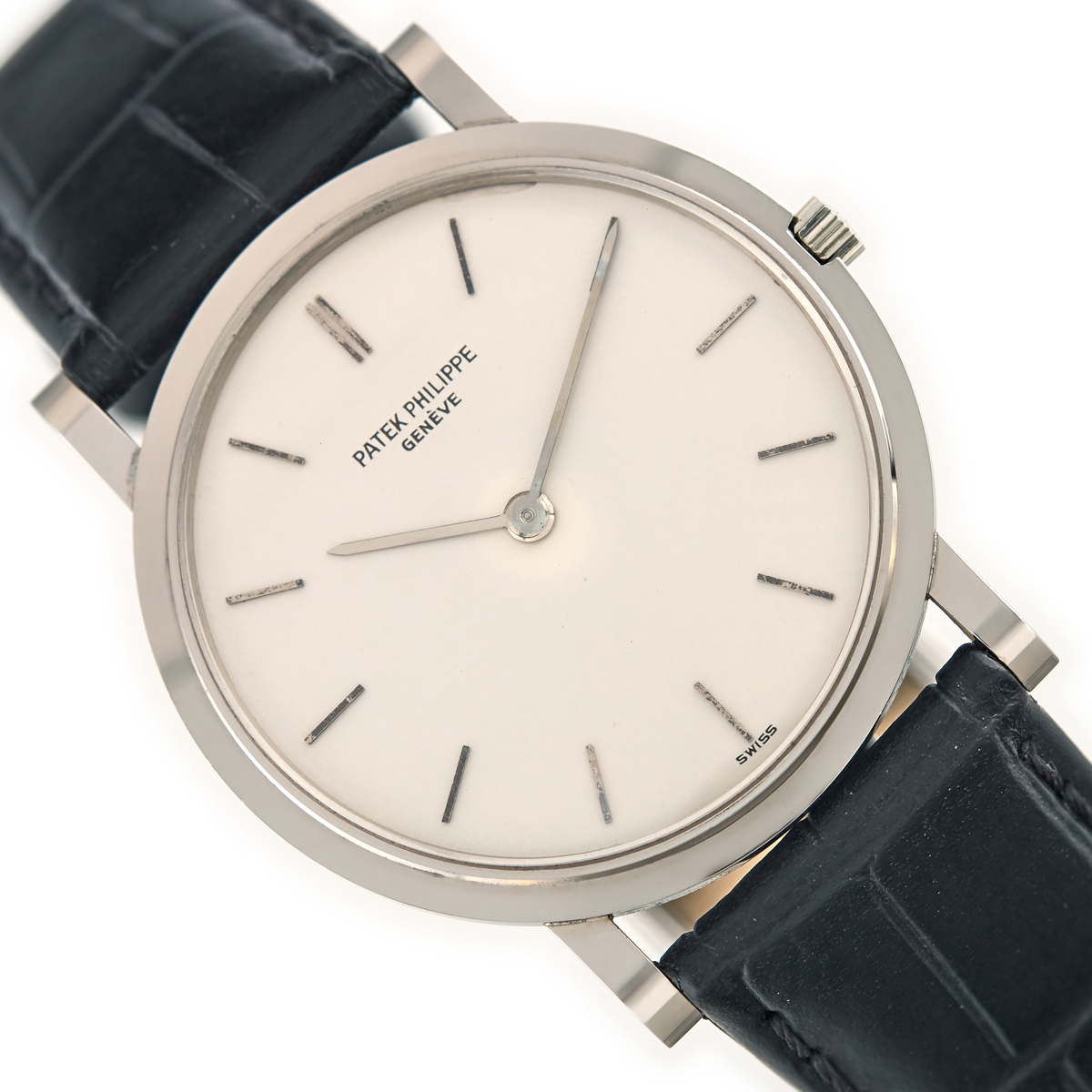
£8,450 Rolex Prince Chronometer, 9ct White & Yellow Gold, 1928/29

£9,750 IWC Da Vinci Model Ref. 3750 18ct c1990
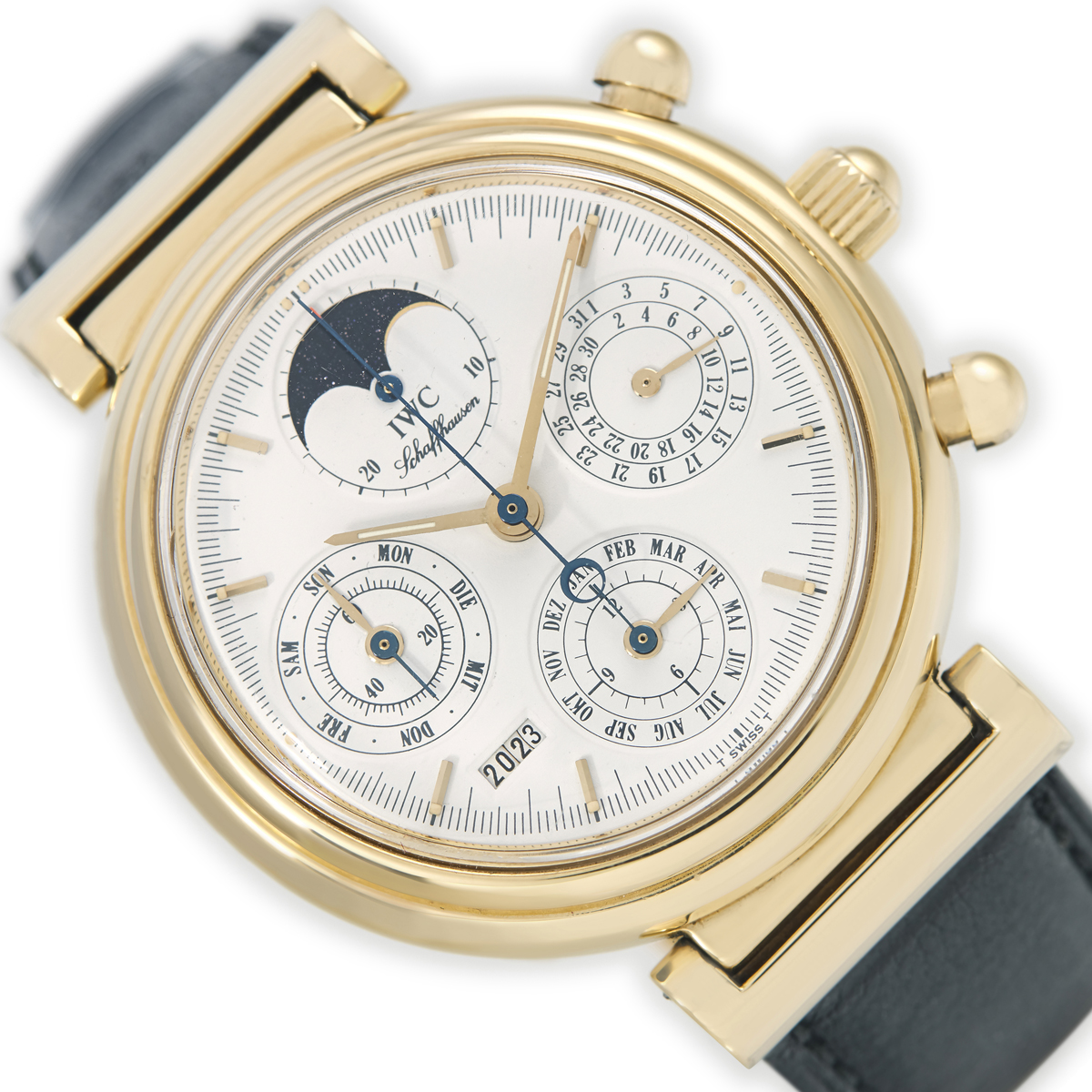
£10,000 to £19,999
Now we get into the investor and collector pieces that are very rare and highly sought-after.
£10,500 Patek Philippe Cal.9″90, 18ct, 1939
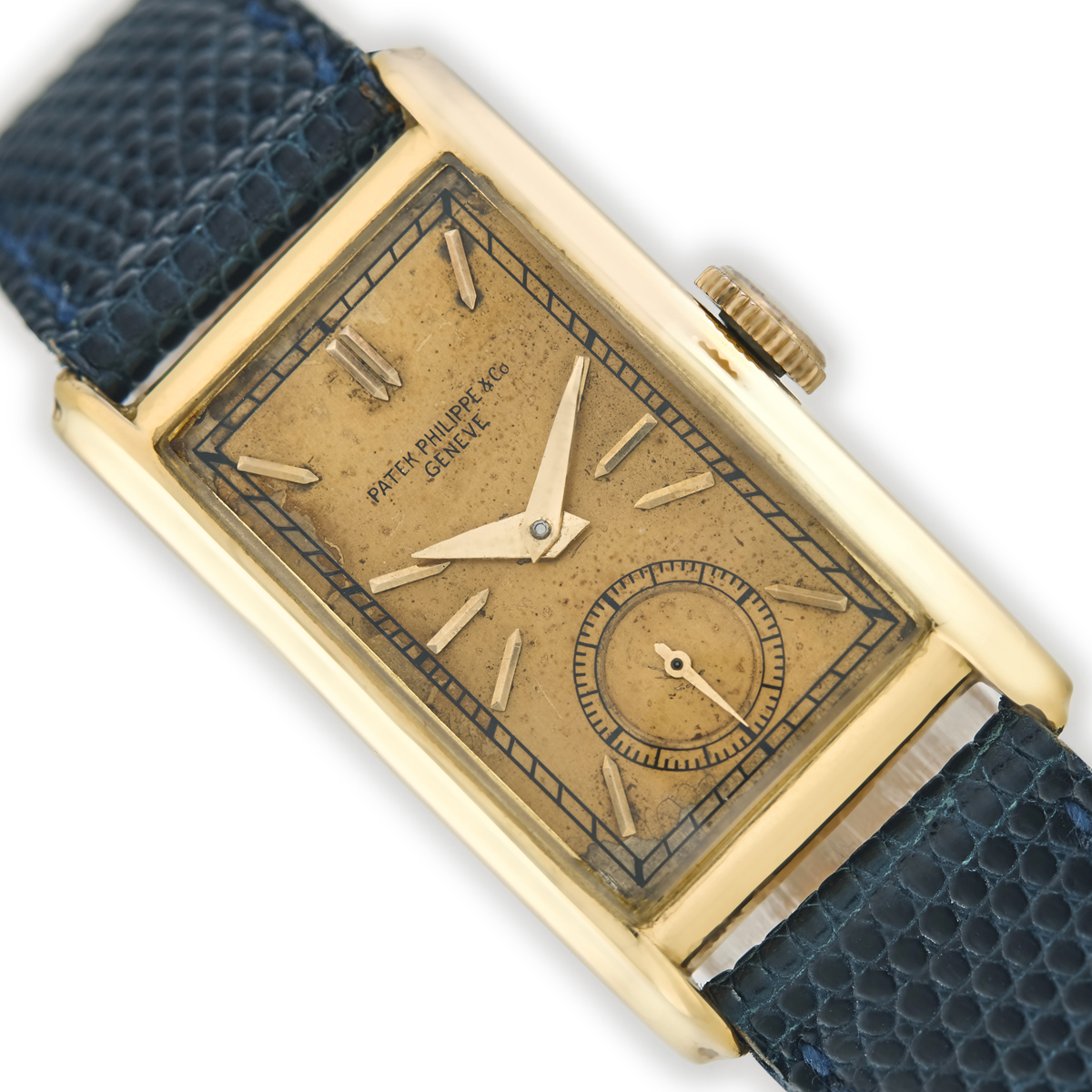
£12,450 Zenith El Primero Triple Calendar Moonphase, 18ct Pink Gold, 2008
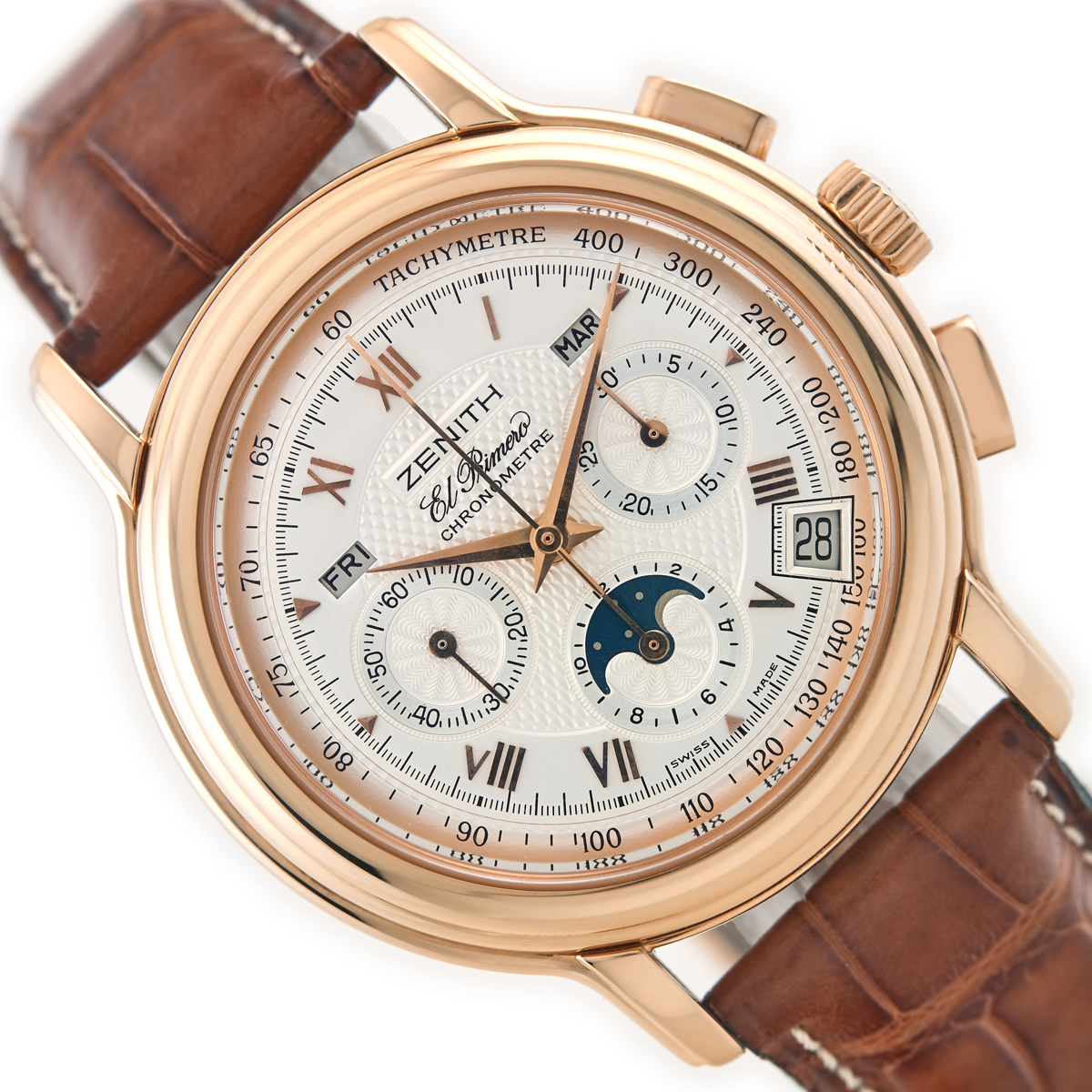
£12,750 Rolex Oyster Perpetual Ref.6105, 18ct, 1952, Red Date
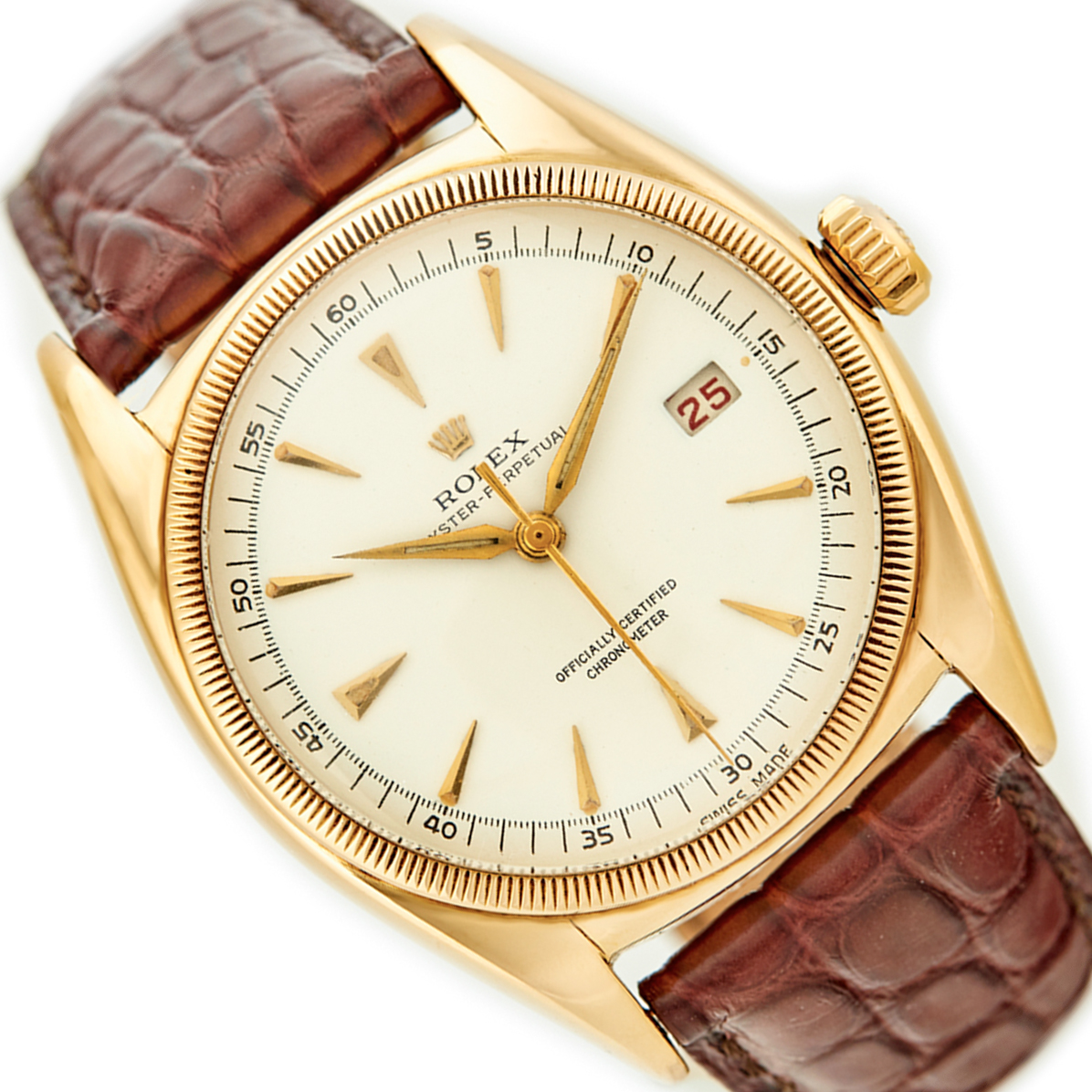
£14,500 Patek Philippe Automatic Ref 5012/3, 18ct, 1994, On 18ct Bracelet
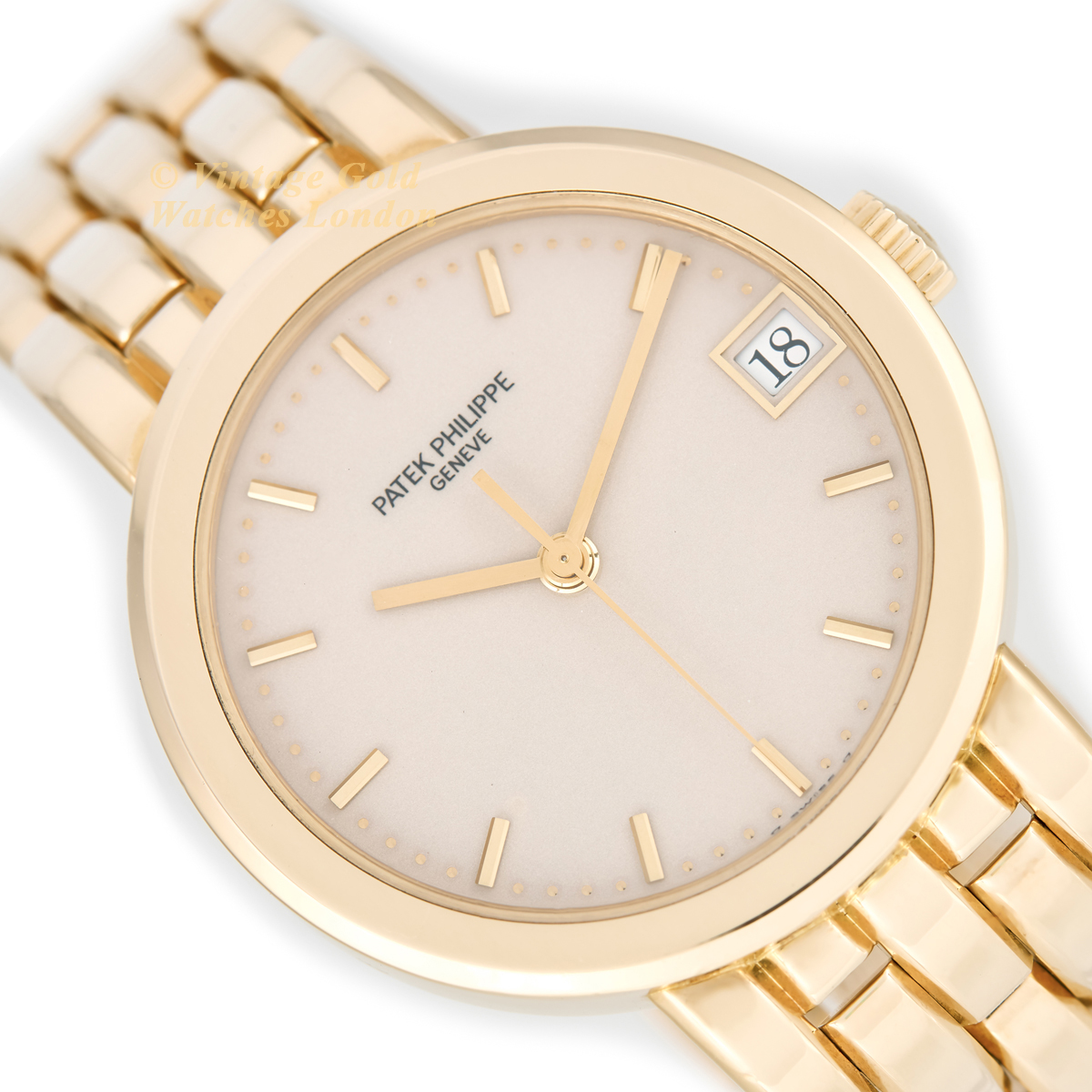
£16,950 Rolex Datejust Turn-O-Graph Model Ref.1625, 18ct Pink Gold, c1961
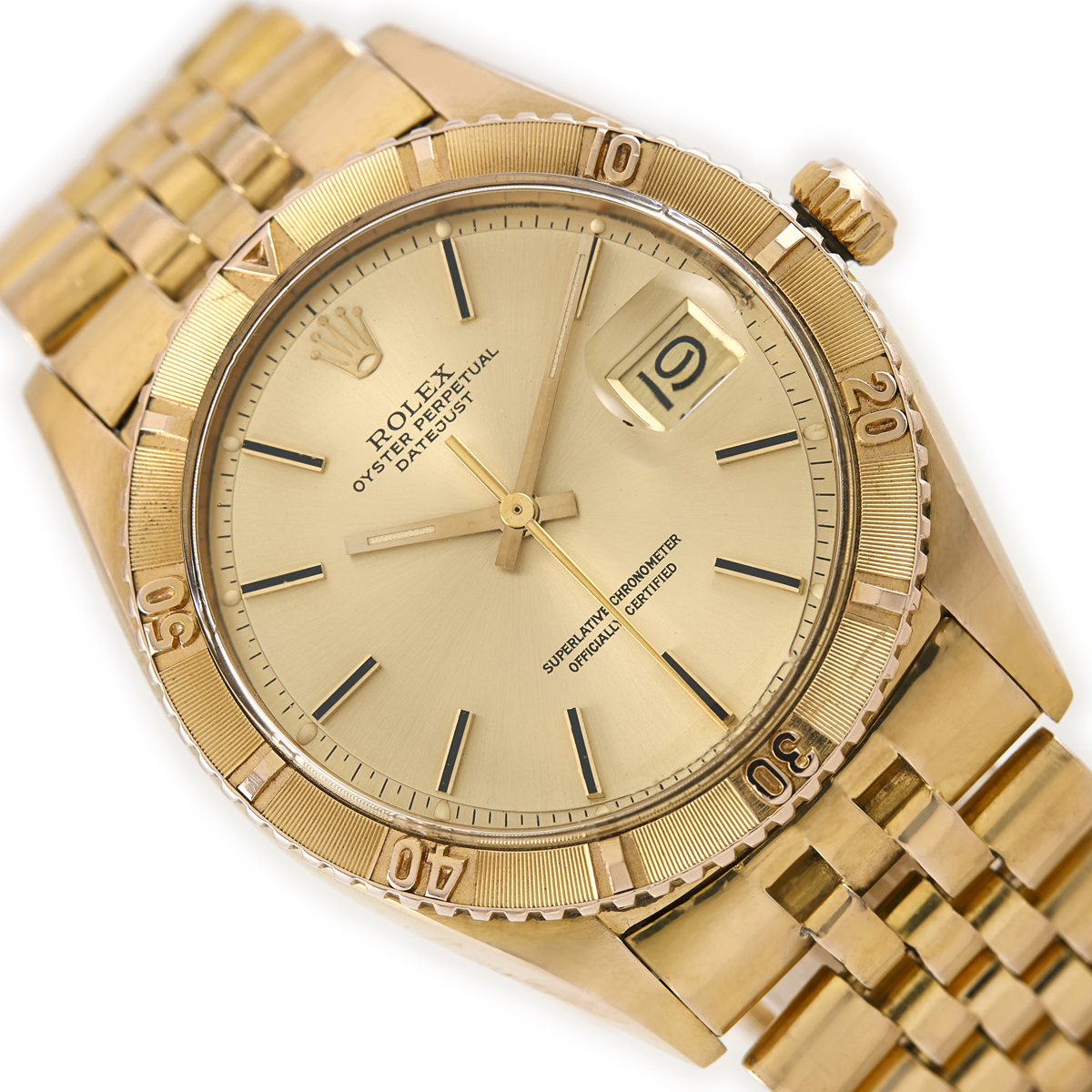
£20,000 +
This may be the super league but we can all dream!
£20,050 Zenith El Primero Triple Calendar Moonphase Platinum, 2002
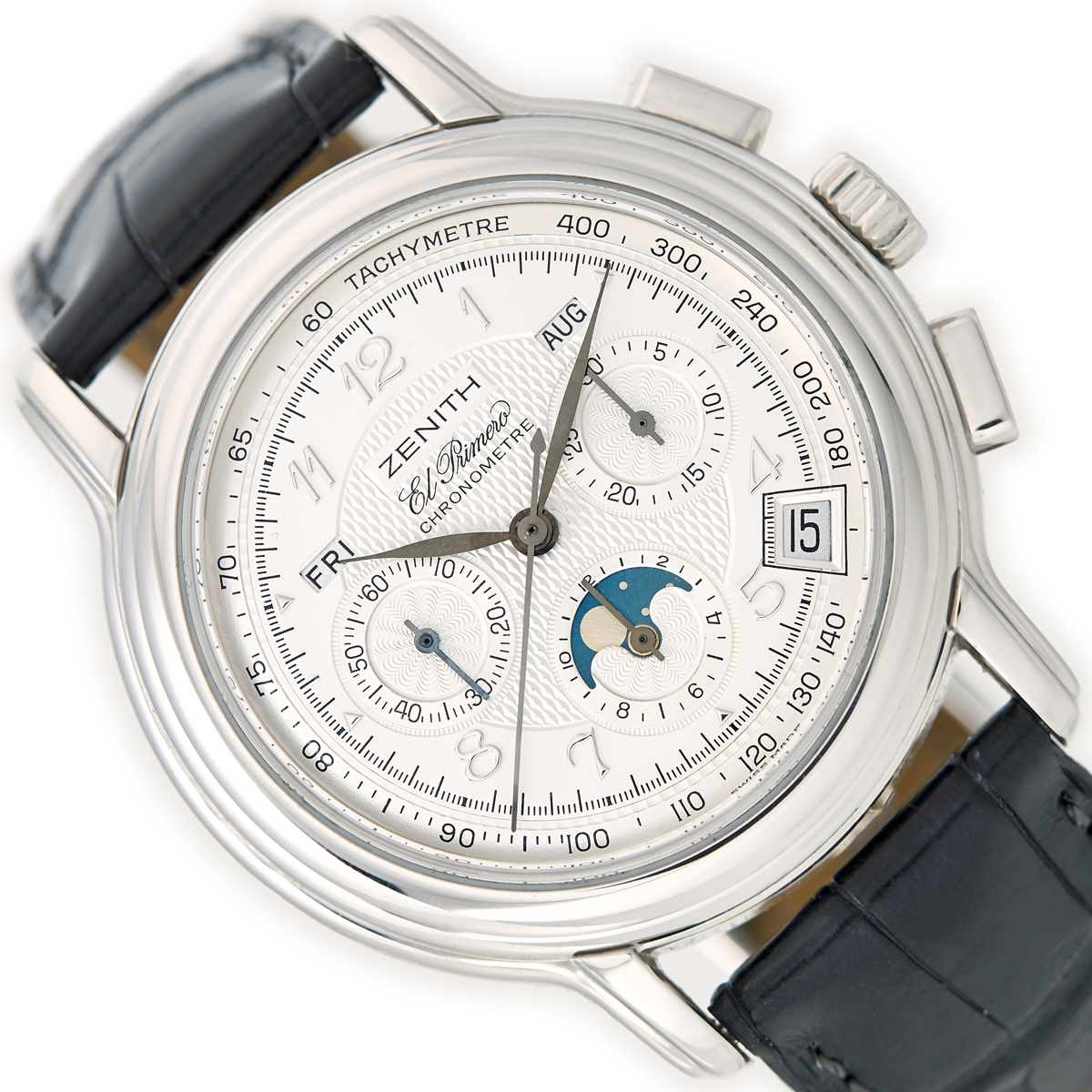
£27,000 Rolex Prince Jump Hour Chronometer, 18ct Yellow and White Gold, c1930, Museum Condition
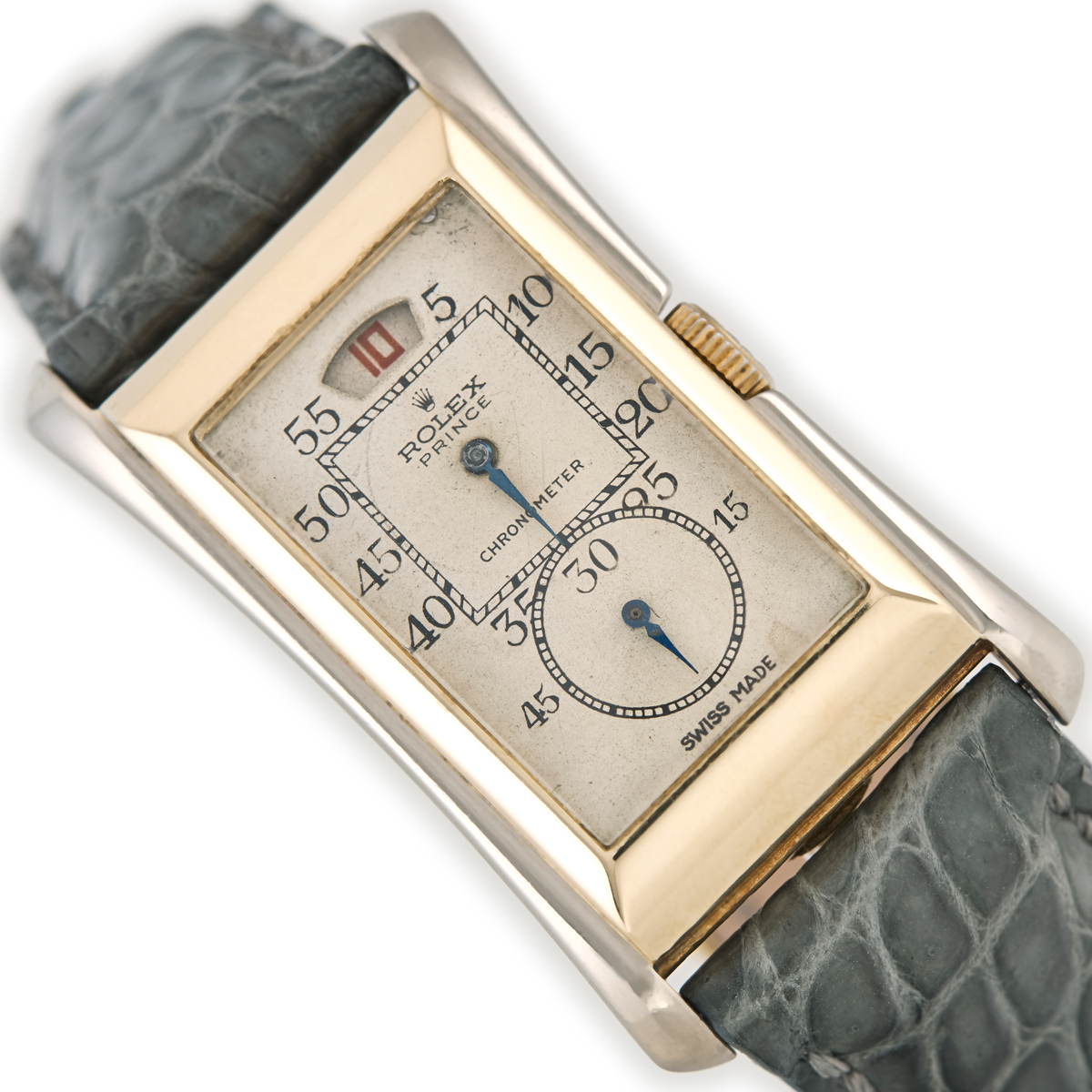
£38,750 Rolex Submariner Ref.5508, 1957, Exclamation Dot Dial
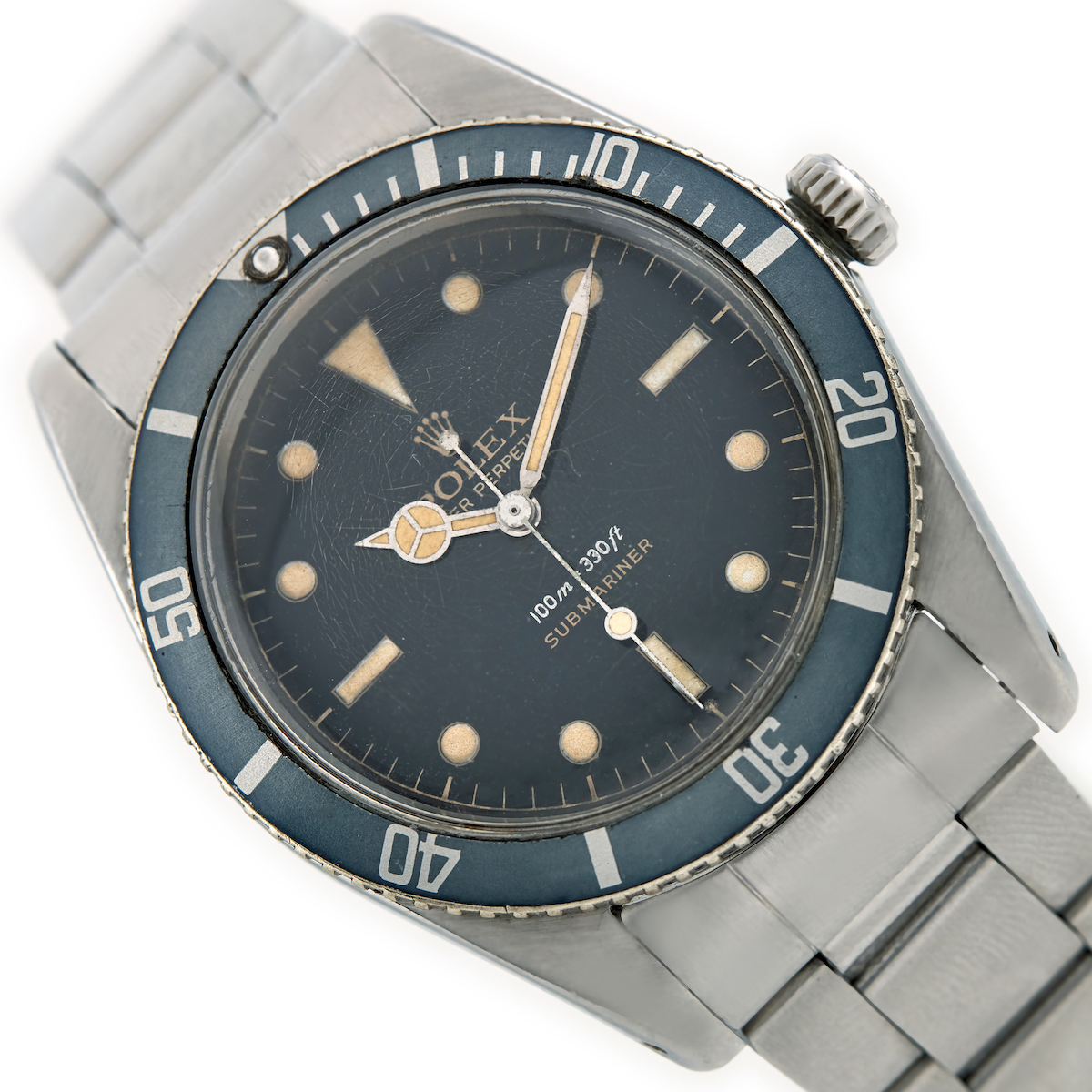
Whether you’re in the market for a dress watch, a sports watch or something in between, you’re likely to find a much greater range to suit your style and budget preferences within the vintage market compared to the retail market.
So wherever your vintage watch-buying journey leads you, take your time, enjoy the journey, and welcome to the wonderful world of vintage watches.

